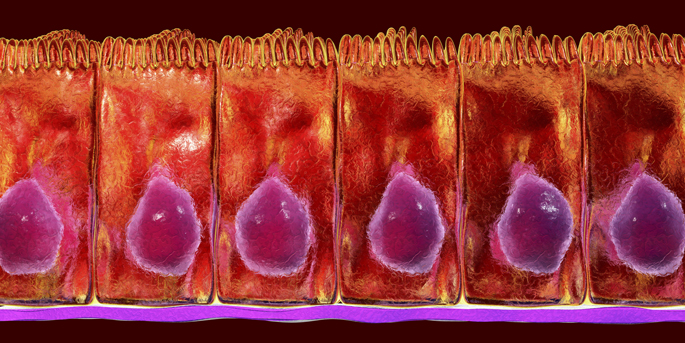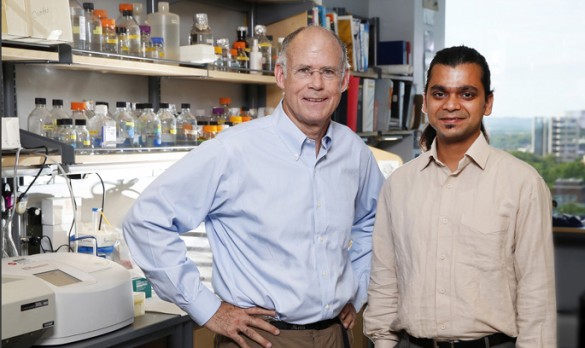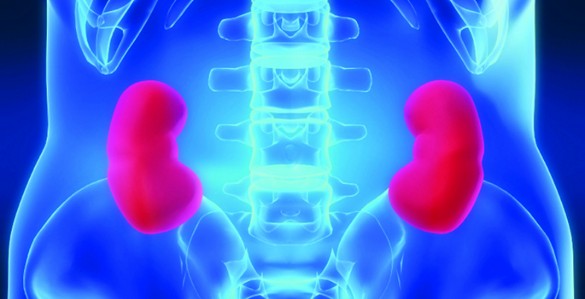by Yan Su
The epidermal growth factor receptor (EGFR) is activated in different locations in the cell by different proteins called ligands. Transporting ligands to the wrong places, called mistrafficking, is associated with abnormal signaling and cancer.
Polarized columnar epithelial cells have an “apical” surface that faces the lumen, or body cavities, and a “basolateral” surface that faces inward, toward other cells, the blood or supportive tissue.
In the Journal of Cell Science, Bhuminder Singh, Ph.D., Robert Coffey, M.D., and colleagues report that an EGFR ligand, betacellulin, is preferentially sorted to the basolateral surfaces of kidney cells grown in culture.
Mistrafficking of betacellulin induces a unique phenotype – formation of lateral lumens. Lateral lumens are characteristic of polarized liver cells called hepatocytes. Instead of an apical membrane on the top of the cell, hepatocytes (and these betacellulin mistrafficked kidney cells) exhibit an apical membrane on the side between two or more cells.
Understanding ligand trafficking and specific EGFR-ligand interactions may help to uncover the causes of certain cancers.
The study was supported in part by National Institutes of Health grant CA046413.
Send suggestions for articles to highlight in Aliquots and any other feedback about the column to aliquots@vanderbilt.edu















